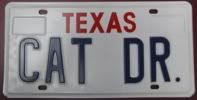
How many amps does an amp gauge pull?
12 posts
• Page 1 of 1
How many amps does an amp gauge pull?
This may have already been covered but I'll be darned if I can find it anywhere. I want to wire in an automotive type charge/discharge analog amp gauge, in series, between the positive post and the DC workings of the trailer. My question is, is there an amp draw when the amp meter is at rest (zero)? Also, when its giving a reading, plus or minus, is there an additional amp draw on the system? 

-

4123 - The 300 Club
- Posts: 340
- Images: 50
- Joined: Thu Dec 13, 2007 11:54 pm
- Location: Cave Junction Oregon
How many amps would an amp gauge pull if an amp gauge could pull amps? Say that 3 times real fast!  (sorry Ron)
(sorry Ron)
 (sorry Ron)
(sorry Ron) Mark (& Cindi)
Mark (& Cindi) Visit our website: Little Swiss Teardrop
I was wondering why the water balloon was getting bigger... and then it hit me.




-

planovet - The Cat Man
- Posts: 5583
- Images: 3
- Joined: Tue Nov 27, 2007 4:48 pm
- Location: Plano, Texas







